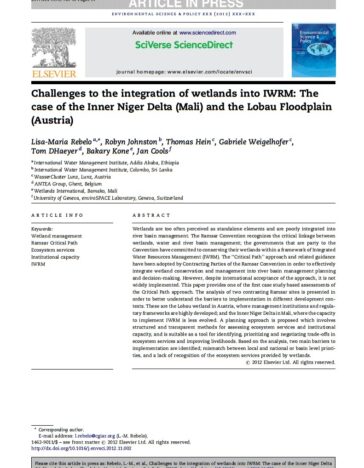
Challenges to the integration of wetlands into IWRM: The case of the Inner Niger Delta (Mali) and the Lobau Floodplain (Austria)
-
Community resilience
Wetlands are too often perceived as standalone elements and are poorly integrated into river basin management. The Ramsar Convention recognizes the critical linkage between wetlands, water and river basin management; the governments that are party to the Convention have committed to conserving their wetlands within a framework of Integrated Water Resources Management (IWRM). The ‘‘Critical Path’’ approach and related guidance have been adopted by Contracting Parties of the Ramsar Convention in order to effectively integrate wetland conservation and management into river basin management planning and decision-making. However, despite international acceptance of the approach, it is not widely implemented.
This paper provides one of the first case study based assessments of the Critical Path approach. The analysis of two contrasting Ramsar sites is presented in order to better understand the barriers to implementation in different development contexts. These are the Lobau wetland in Austria, where management institutions and regulatory frameworks are highly developed; and the Inner Niger Delta in Mali, where the capacity to implement IWRM is less evolved. A planning approach is proposed which involves structured and transparent methods for assessing ecosystem services and institutional capacity, and is suitable as a tool for identifying, prioritizing and negotiating trade-offs in ecosystem services and improving livelihoods. Based on the analysis, two main barriers to implementation are identified; mismatch between local and national or basin level priorities, and a lack of recognition of the ecosystem services provided by wetlands.
Author(s): Lisa-Maria Rebelo, Robyn Johnston, Thomas Hein, Gabriele Weigelhofer, Tom DHaeyer, Bakary Kone, Jan Cools
2012 Elsevier Ltd. All rights reserved.

